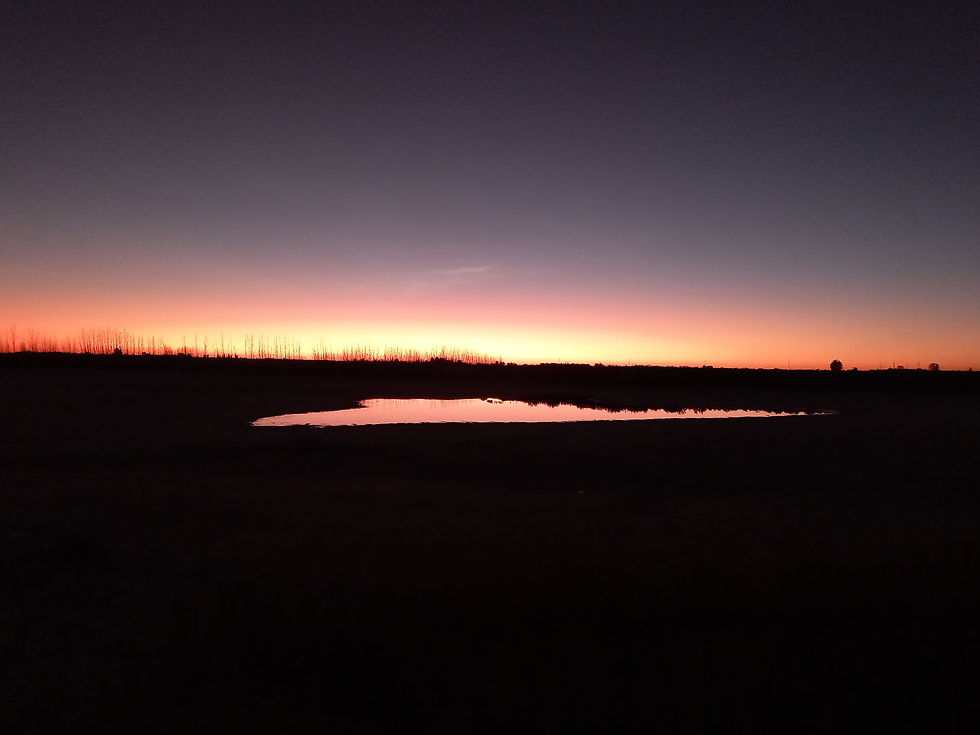María Eugenia de Porras
Palaeoecologist
Vegetation dynamics in the Patagonian Andes (49°S) since the mid-Holocene based on a multiscalar approach
Ecosystems east of the Patagonian Andes (49°S) offer a natural laboratory for understanding how plant communities have responded to different forcing on different time scales. These landscapes have experienced glacial advances and retreats of different magnitudes during the Holocene and the last advance during the Little Ice Age, from which a sustained increase in temperature is recorded at a global and local level. Different vegetation units (high Andean community, Nothofagus forest, grass and shrub steppes) are distributed in response to the temperature and precipitation gradients. Thus, within these environments, there are different ecotones of vegetation that are particularly sensitive to changes in climatic conditions. This vegetation dynamics in the present and in the past can be studied from different biological indicators. This project proposes to reconstruct the changes in the vegetation of the Patagonian Andes (49°S) in response to climate variability since the middle Holocene through the analysis of different biological indicators: pollen and non-pollen palynomorphs, tree ring growth (width and stable isotopes), seedling establishment and survival, and seed production. The approach will be multiscalar and two time windows are proposed: (1) the middle Holocene (ca. 8000-4000 years BP) in relation to local and regional neoglaciations, and (2) the last ca. 300 years BP, which includes the event known as the Little Ice Age (~450-150 years BP), the warming over the last century, and human impact since the arrival of the first settlers.
PICT 2021-1079






















Comparative archeology and human resilience in northwest Patagonia: a multiscalar interdisciplinary approach
The project aims to study the processes of human resilience building associated with climate change in northern Neuquén during the Holocene. Resilience is understood as the magnitude of a shock that a system can absorb before changing to a different stable state. We use the socio-ecological systems framework, since resilience is an emergent product of co-evolutionary processes between climatic, ecological and social dynamics. These systems do not change linearly, so understanding how their individual components work is not enough. The existence of multiple variables and complex interactions requires new theoretical and methodological approaches that transcend traditional disciplines. This project connects three usually unrelated fields of knowledge: a) an archaeological approach to the long-term human geographic organization, b) a paleoecological study of environmental fluctuations during the Holocene, and c) a geographic approach to the spatial organization of current transhumant societies. PIP 2022-2024










Tectonic and climatic controls in the paleoenvironmental evolution of the lower Mendoza river basin during the Late Pleistocene-Holocene
The geomorphological evolution and paleoenvironmental reconstruction of the ancient Mendoza River have not been comprehensively analyzed, neither spatially nor temporally. The main reconstructions associated with this fundamental resource of the north productive oasis of Mendoza have been related from historical and archaeological approaches that hardly include more than 2000 AD. Possibly this fact has biased the interpretation of the possible climatic causes associated with the environmental dynamics of this part of the Andes. However, the undisputed fact that the study area is located in the active orogenic front of the Andes, associated with intense seismic activity, allows us to suspect that tectonics could have played a fundamental role in the geomorphological evolution of the lower Mendoza river basin. Thus, the environmental history of northern Mendoza is associated with the evolution and dynamics of the lower basin of the Mendoza River where geomorphological, climatic and cultural processes are closely related. The understanding of geomorphological processes is essential for archaeological investigations, as well as for other disciplines such as hydrogeology, environmental risks, and even public health. This project is a part of previous studies carried out together with geologists, archaeologists, hydrogeologists, civil engineers, paleoclimatologists and palinologists. PICT-2019-3426 (2021-2024)












Climate change and landslides occurrence in the subtropical Andes since the Late Pleistocene
The present project integrates evidences of past climate and environmental changes in the subtropical Andes together with landslides occurrence and dynamics aided by modern climate research to disentangle the associated mechanisms at the synoptic scale and the climate trends at decadal scale.
The evidence from the three research lines results in (1) a broad knowledge of the palaeoclimatic dynamics of the subtropical Andes regarding winter precipitation and secondarily, summer precipitation; (2) a detailed study of landslides occurrence, frequency and timing and the associated climatic conditions from the Late Pleistocene to historical and recent times and; (3) an integral understanding of modern climate trends from the synoptic to the decadal scale in the subtropical Andes that shed light to the links between climate and landslides occurrence. The integration of these results are key to foster future events under the current climatic change scenario and for the assessment of the related hazard and risk, which are essential to reduce social and economic impacts on vulnerable communities.
FONDECYT #1180413 (2018-2023)
































Past climatic and environmental dynamics of the southern Atacama Desert (24°-27°S) since the Late Glacial
The present project aims to trace the palaeoenvironmental and palaeoclimatic dynamics at southern Atacama Desert (24°-27°S) since the Late Glacial through the fossil rodent midden pollen record analysis. The project will be focused on tracing (1) the interaction of summer/winter rainfalls through time and space by analyzing changes in the midden pollen assemblages at different altitude and latitude complementarily supported by 18O isotopes in fossil plant macro-remains cellulose and (2) the effects of climatic changes occurred since Late Glacial on the vegetation communities at a biogegraphically hinge area as the Southern Atacama Desert.
FONDECYT #11150089 (2015-2018)























